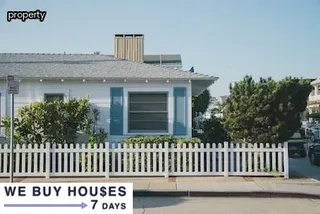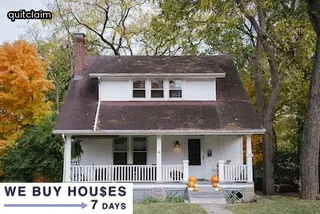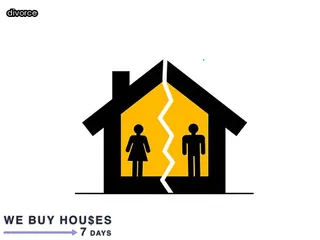Understanding a South Dakota Quitclaim Deed without Covenants form is essential when completing one for your home. A quitclaim deed transfers any interest the grantor has in real estate, but claims no warranties or promises that the title is valid.
This type of deed offers less protection than a warranty deed, as it cannot guarantee that the grantee is receiving good and valid title to the property. All parties must sign and date the document, and both signatures should be notarized.
The address of the property should be clearly listed on the form, along with a legal description. The county where it will be recorded must also be specified.
Before signing and notarizing, all parties should read through the document in its entirety to ensure accuracy and understanding of all terms involved. It's important to note that if covenants are included in this type of deed, they will supersede those found in other documents related to the property transaction.

A South Dakota Quitclaim Deed without Covenants offers a variety of advantages to homeowners. The most significant advantage is that it can transfer ownership quickly and easily.
There is no need to include warranties or covenants in the deed. This means that the process of transferring ownership is simpler, faster, and less costly than with other types of deeds.
Furthermore, there are fewer legal requirements for filing and recording a Quitclaim Deed without Covenants in South Dakota. The lack of warranties also ensures that the new owner does not have any liabilities associated with the property.
Finally, because no title search is necessary for a Quitclaim Deed without Covenants, the seller does not have to worry about potential title defects or encumbrances from prior owners. All these advantages make a South Dakota Quitclaim Deed without Covenants an attractive option for homeowners who want to easily transfer ownership of their home.
Drafting a valid South Dakota Quitclaim Deed without Covenants form is a straightforward process, but it is important to follow the necessary steps correctly. Knowing what information needs to be included in the deed and understanding how to complete the document are essential for creating a legally binding quitclaim deed.
The grantor must provide their full legal name, address, and contact information in the document. To ensure that everything is clear, it is also important to include exact language describing the property's address or legal description.
Additionally, all parties involved must sign and have their signatures notarized before submitting the document to the appropriate county office. It is also important to note that covenants are often included in deeds as an additional layer of protection; however, these can be omitted if desired when drafting a South Dakota Quitclaim Deed without Covenants form.

When completing a South Dakota Quit Claim Deed for your home, the benefits of title insurance are clear. Title insurance provides financial protection and peace of mind that you have properly completed the deed without any covenants or underlying liens.
By obtaining title insurance prior to signing the Quit Claim Deed, you can be sure that all legal documents associated with the deed are accurate and up-to-date. Additionally, if any disputes arise in the future concerning ownership of the property, title insurance will provide coverage for legal costs associated with successful resolution of those disputes.
Moreover, it is important to note that title insurance does not guarantee the accuracy of information on a deed but rather provides financial protection from costly legal fees should a dispute arise over ownership of your home. Ultimately, obtaining title insurance when completing a South Dakota Quit Claim Deed for your own home is an invaluable asset to ensure proper documentation and protection from potential legal issues in the future.
Estate planning is a complex process that can often involve several different types of deeds. In South Dakota, one of the most common deeds used for estate planning is the quit claim deed.
A quit claim deed transfers property ownership rights from one person to another without warranties or guarantees. It is an important document to understand and complete correctly when divesting property in South Dakota.
The process of completing a South Dakota quit claim deed involves gathering the necessary information, filling out the form accurately, and signing it in front of two witnesses. The primary purpose of a quit claim deed is to transfer ownership rights quickly and easily; however, it also serves as an official record of title change in South Dakota.
Other types of deeds commonly used for estate planning in South Dakota include warranty deeds and special warranty deeds which both contain more detailed language regarding warranties than quit claim deeds. Additionally, beneficiaries may also use life estate deeds to transfer ownership rights after death.
Understanding how to correctly complete all types of these documents is important for properly managing an estate plan in South Dakota.

A South Dakota Quitclaim Deed without Covenants Form can be a useful document for many different situations. It is often used when transferring property from one person to another, as it releases any claims the current owner has to the property and allows the new owner to take full ownership.
It can also be used to add or remove an individual from title, such as when spouses are divorcing or remarrying. Additionally, it is sometimes utilized when changing the name of the owner on title, updating beneficiaries in an estate plan, and creating trusts.
Finally, it can also be used to transfer a property between family members or other close associates. A South Dakota Quitclaim Deed without Covenants Form is versatile and easy to fill out, making it a popular option for those looking to transfer property quickly and efficiently.
Completing a South Dakota Quitclaim Deed without Covenants Form is a straightforward process. It begins by obtaining the form from the local County Register of Deeds office.
The form must be filled out completely, with all information correctly entered. The grantor's name should be listed first in the grantor section, followed by their mailing address and county of residence.
Co-grantors should also be listed on the form. The legal description of the property being transferred should be entered in the appropriate field and the deed type (Quitclaim) should be selected.
All signatures must be witnessed and dated before filing the document with the Register of Deeds Office in order to complete the transfer of ownership.

Completing a South Dakota Quit Claim Deed for your home is a process that requires understanding of the state's legal requirements and laws. It is important to be aware of any legal limitations or restrictions that might be in place regarding the transfer of ownership.
In South Dakota, it is necessary to adhere to certain rules when completing a quitclaim deed. The deed must be written on stamped paper, include a description of the property, have signatures from both parties involved, and must be notarized by a licensed notary public in order to make it legally enforceable.
Additionally, all parties involved should provide identification when signing the document in order to verify identity. Furthermore, any taxes related to the transfer must also be paid before filing with the county clerk's office.
Transferring ownership of real estate through quit claim deeds in South Dakota must follow all applicable state laws and regulations in order to ensure its validity and legality.
A South Dakota Quitclaim Deed is a legal document that transfers ownership of real estate from one person to another. It is important to ensure that the deed is written correctly and filed properly in order to make it valid.
To begin, the grantor (the person transferring ownership) should fill out the deed with their name and address, as well as that of the grantee (the person receiving ownership). Next, the property description should be outlined, including its street address and land parcel number.
Once completed, the deed should be signed by both parties and notarized. Afterward, two copies of the Quitclaim Deed must be submitted to the Register of Deeds in the county where the property is located.
Upon approval, a Certificate of Recording will be issued and can be used as proof of transfer when necessary. Understanding all these steps is essential for ensuring a successful completion of a South Dakota Quitclaim Deed transfer.

Creating a South Dakota Quit Claim Deed for your home doesn't have to be difficult. In fact, it can be achieved without the need for covenants by using sample forms and templates.
To get started, you'll need to find an appropriate template that meets your requirements and is approved by your local county office. Once you've found the right form, you will need to fill out all of the necessary fields and include any relevant information such as the grantor's name, address and contact information.
Additionally, you'll want to include the grantee's name, address and contact details as well as a description of the property being transferred. It's important to make sure that all of this information is accurate and complete before signing the document in order for it to be legally binding.
With these steps completed, you can easily create a South Dakota Quit Claim Deed without covenants for your home in no time at all.
Completing a South Dakota Quit Claim Deed is a straightforward process that, when done correctly, can ensure that all parties involved are protected. Fortunately, there are a variety of free resources available to help you obtain a validly executed South Dakota Quitclaim Deed without covenants.
These resources include information on the necessary forms and documents, legal procedures and timelines for filing in your county, and more. To start the process of obtaining your deed without covenants, you'll need to fill out an application form and file it with the county clerk's office.
Once approved, the clerk will provide you with instructions on how to properly complete a quitclaim deed without covenants. In addition to providing helpful information about completing your deed, these free resources can also assist with locating any relevant state laws or local ordinances that may affect your transaction.
With this knowledge in hand, you can be sure that your deed is legally binding and enforceable according to South Dakota law.

In South Dakota, the Certificate of Real Estate Value (CRV) is an essential part of the process for completing a quitclaim deed. A CRV is a document that serves to establish the sale price of a property.
It also helps to ensure that any transfer taxes or fees due on the property are paid in full. The CRV must be filed with the Register of Deeds in the county where the property is located within 30 days of execution of the quit claim deed.
The CRV can also be used to calculate transfer taxes and other related fees associated with transferring a property from one owner to another. In addition, it is necessary for lenders to review a copy of the CRV when considering mortgage loan applications for properties being transferred via quitclaim deed.
Without an accurate and up-to-date CRV, obtaining financing may be difficult or impossible. As such, it is important to make sure that all documentation related to a quitclaim deed in South Dakota includes an accurately completed and current Certificate of Real Estate Value.
When completing a quit claim deed in South Dakota, there are certain exemptions from the transfer fee. To qualify for an exemption, the deed must be executed between family members or immediate relatives.
The transferee must be related to the transferor by blood or marriage and proof of relationship must be provided. For example, if a husband wants to transfer ownership of his home to his wife, he would need to prove that they are legally married.
Another exemption is if the owner of the property is deceased and their estate is being transferred. In this case, no transfer fee would apply as long as all heirs agree on the transfer and sign off on it.
Additionally, any transfers that take place due to foreclosure or repossession are also exempt from the transfer fee in South Dakota. Knowing which transactions are subject to a transfer fee and which ones are exempt can help ensure that all parties involved understand their rights and obligations when completing a quit claim deed in South Dakota.

When filing a quit claim deed in South Dakota, there are certain items that must be recorded. These include the names of the grantor and grantee, legal addresses, signatures of both parties, a legal description of the property, the tax parcel number (if applicable), an acknowledgement or notarization of the document and any other information that is pertinent to the transaction.
All documents related to this transaction should also be included so that it can be verified later on if required. It is important to ensure that all documents are accurate as errors could lead to complications down the road.
Additionally, both parties should keep a copy of all documents for their own records in case they need to refer back to them at a future date.
Completing a South Dakota Quit Claim Deed for your home is an important step in transferring ownership. The first step would be to obtain the deed form from an authorized source such as a local notary or government official.
Once you have the form, you will need to fill out all of the necessary information including the names and addresses of both parties involved in the transfer, any applicable taxes or fees that must be paid, and the legal description of the property being transferred. Once all of this information is completed, both parties must sign and date the form in front of two witnesses who are not related to either party.
After that, one of those witnesses must also sign as a witness to each party’s signature. Then, take the signed quit claim deed document along with any other required paperwork such as proof of taxes paid to your local county office for recording.
Once everything has been recorded, ownership has officially been transferred from one party to another according to South Dakota laws.

Completing a South Dakota quit claim deed for your home is an important legal process that comes with certain requirements. It is essential to understand the title transfer requirements, such as any necessary signatures and notarization stamps.
Before completing the deed, it may be wise to consult a legal professional for advice regarding the process. Additionally, it is important to consider the potential tax implications of transferring ownership.
After all paperwork is completed and signed by all parties involved, recording the quit claim deed must be done at the local recorder's office. Finally, after completing this important task, it would be greatly appreciated if you could leave a review of our services as feedback.
Yes, South Dakota does have a Transfer on Death (TOD) Deed for use in the transfer of real estate ownership. A TOD Deed is similar to a Quit Claim Deed and allows for the transfer of a deceased person’s real estate without having to go through probate court.
To complete a South Dakota TOD Deed for your home, you will need to include the full names of all parties involved, the legal description of the property being transferred, and any other relevant information regarding the deed transaction. You must also sign and notarize the document before filing it with your county clerk's office.
The TOD Deed should be recorded within 90 days of signing in order to protect your rights as owner or beneficiary.

In South Dakota, a contract for deed is an agreement between a buyer and seller to transfer real estate. The seller (grantor) agrees to transfer title of the real estate to the buyer (grantee) upon completion of all payments as agreed upon in the contract.
To complete a South Dakota Quit Claim Deed, the grantor must sign, date, and acknowledge the deed in front of a notary public or two witnesses. The grantor must also provide proof of identity such as a driver’s license or passport.
After this is done, the grantee signs and acknowledges receipt of the deed in front of either a notary public or two witnesses and pays all fees required for recording the deed with their local county recorder’s office. Once recorded, the deed will be legally binding on both parties and title to the property will be transferred from grantor to grantee.
South Dakota real estate transfer tax is a tax imposed on the sale, gift or exchange of real estate in South Dakota. The rate of this tax is based on the value of the property and can range from
75% to 1%. This tax must be paid at the time of transfer and is due within 30 days of the transaction. When completing a South Dakota Quit Claim Deed for your home, it is important to know that you will be required to pay this transfer tax before the deed can be recorded by your local county government office. It is also important to note that the amount due may vary depending on the county you live in, so it is best to consult with your local authorities prior to filing any documents related to transferring ownership of your home.
If you are looking to file a quit claim deed in North Dakota, it is important to understand the process. To begin, make sure that the deed is properly completed and signed with all necessary information filled out.
The Quit Claim Deed must be notarized with two witnesses present. Once the deed is complete, it must be recorded at the County Recorder's office in the county where the property is located in North Dakota.
You will also need to submit a $25 fee along with the deed when filing. After filing, you will receive an acknowledgement of recording which serves as evidence that your quitclaim deed has been legally filed.
It's important to keep this document for future reference and proof of ownership. With these simple steps, you can easily complete a South Dakota Quit Claim Deed for your home in North Dakota.
A: To complete a quit claim deed on a house in South Dakota, you will need to gather the necessary documents, fill out the quit claim deed form, sign and notarize the quit claim deed, and then record the quit claim deed with the county recorder.